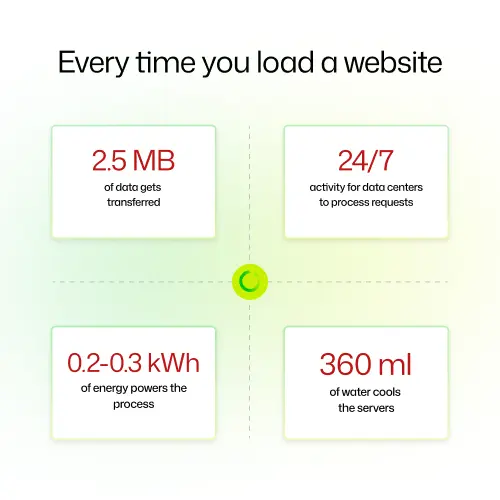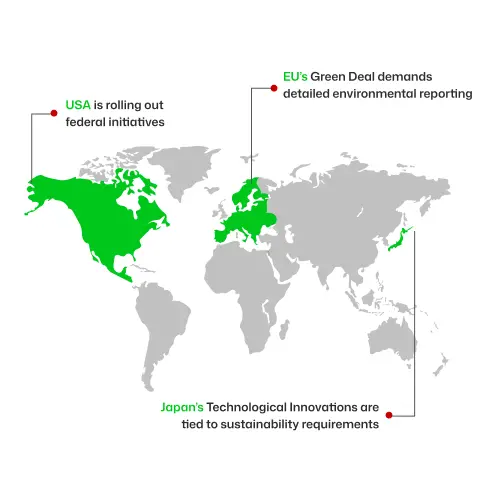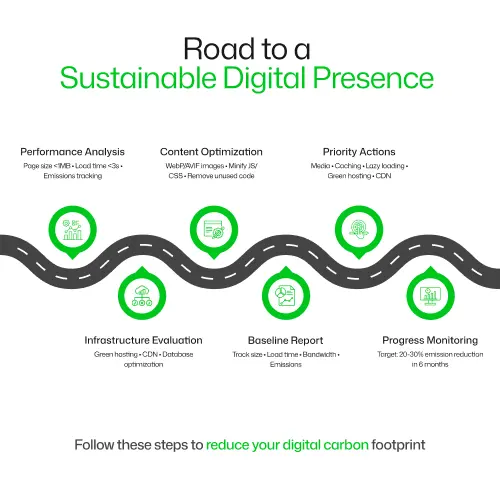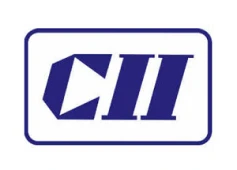Why SMBs Can’t Ignore Sustainability in 2025: ESG, Eco-Friendly Websites, and more!
Sustainability is a growing business need in 2025. Because if we think of it, every resource that we use comes with a cost: office spaces are expensive; electricity is expensive; even something as simple as word-processing software could set us back by a few bucks.
But this isn’t just about finances, but resources. With modern businesses and technology depleting our planet’s resources, soon sustainability could become a huge necessity.
Should we all shift to paperless offices? Go completely remote?
To get an actual solution to this need for sustainability, we must look at business from all sides.
Are digital businesses actually sustainable?
Our journey as a sustainable web development agency started three years ago, because of this very fact:
Digital transformation, which is meant to solve traditional sustainability challenges, has created its own environmental crisis. Paperless offices might be leaving a larger carbon footprint than we realize.

For a single page request, these statistics might look okay. Now imagine 4.6 billion people, sending endless requests, jumping form page to page, everyday?
But in response to all these challenges, we’re witnessing a fundamental shift from the regular Corporate Social Responsibility (CSR) to larger, Environmental, Social, and Governance (ESG) practices.
What is ESG?
ESG is a framework that evaluates a company’s Environmental Impact, Social Responsibility, and Governance Frameworks. These practices ensure organizations stay sustainable and ethical.
A common misconception is that ESG is limited to just looking good in annual reports. However, major economic zones are implementing ESG as strict regulations.

This might sound overwhelming, or even irrelevant to Small and Medium Businesses. But here’s the truth: smaller companies are actually better positioned to adapt and thrive amidst these new regulations.
How can SMBs become more sustainable?
The most ideal place to start is your digital presence. Today’s technological innovations have made sustainability easier and more accessible.
But it could be challenging, because your business relies on multiple tools; your day-to-day could involve an entire tech stack, that includes email, marketing automation tools, AI, and of course, your website. Each of these elements could contribute to your digital carbon footprint.
But you don’t have to transform everything at once. You can start with your website.
But why?
It’s the most visible digital asset, and pretty straightforward to optimize. Optimizing your website also offers concrete, measurable improvements that could benefit your business too!
How to reduce your website’s digital carbon footprint?
It’s the most visible digital asset, and pretty straightforward to optimize. Optimizing your website also offers concrete, measurable improvements that could benefit your business too!





